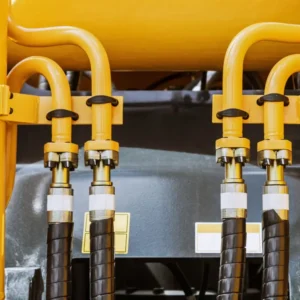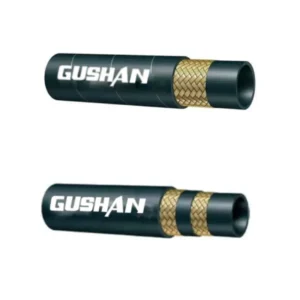Hydraulic hoses are critical components in many industrial and construction machines. They are responsible for transmitting pressurized hydraulic fluid to various components, enabling them to function efficiently. However, over time, these hoses can deteriorate and develop leaks, which can lead to significant problems.
In this blog post, we will delve into the common causes of hydraulic hose leaks, effective solutions to address them, and preventive measures to minimize the risk of future leaks. By understanding these factors, you can take proactive steps to maintain the health of your hydraulic systems and avoid costly downtime.
Reasons Why Hydraulic Hose Leak
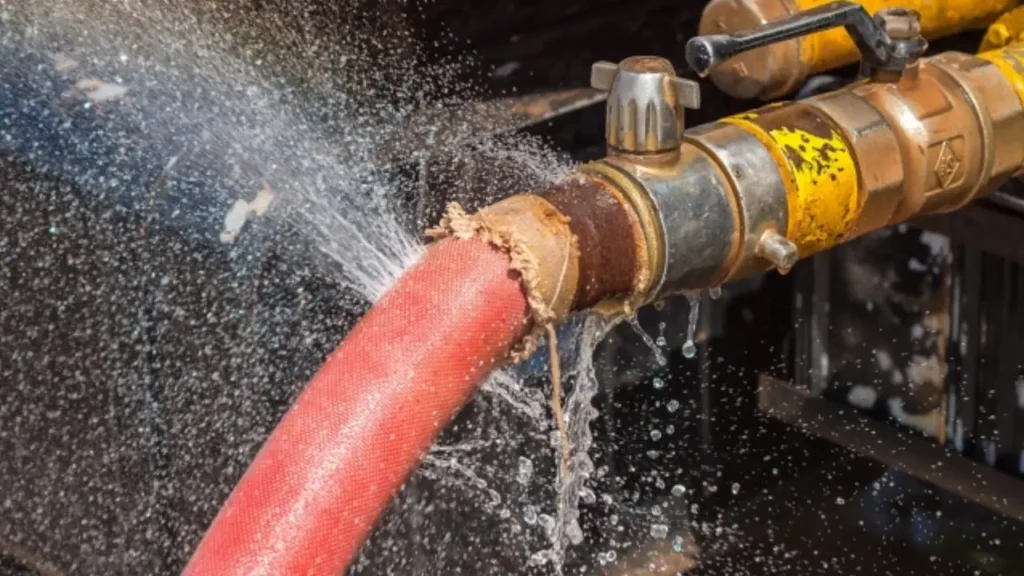
Hydraulic hose leaks can occur due to a variety of factors. Here are some of the most common causes:
1. Wear and Tear:
- Age: Over time, hoses can become brittle and more susceptible to damage.
- Exposure to Elements: Exposure to extreme temperatures, UV radiation, and chemicals can accelerate deterioration.
- Abrasion: Physical abrasion from rubbing against other components can weaken the hose.
2. Improper Installation:
- Incorrect Fitting: Improperly installed fittings can lead to leaks.
- Overtightening: Excessive tightening can damage the hose or fittings.
- Incorrect Routing: Poor routing can cause stress and wear on the hose.
3. High Pressure:
- Excessive Pressure: Exceeding the hose’s pressure rating can cause it to rupture.
- Pressure Surges: Sudden pressure spikes can weaken the hose.
4. Chemical Exposure:
- Incompatible Fluids: Using incompatible hydraulic fluids can damage the hose material.
- Chemical Degradation: Exposure to certain chemicals can accelerate hose deterioration.
5. Physical Damage:
- Impact Damage: Accidental impacts or punctures can cause leaks.
- Rodent Damage: Rodents can chew through hoses, especially in storage or outdoor environments.
6. Vibration:
- Excessive Vibration: Constant vibration can weaken the hose and its fittings.
Common Causes of Hydraulic Hose Leaks
| Cause | Description |
|---|---|
| Wear and Tear | Age-related deterioration, Exposure to extreme temperatures, UV radiation, and chemicals.Physical abrasion |
| Improper Installation | Incorrect fitting installation Overtightening of fittings Poor routing and bending |
| High Pressure | Exceeding the hose’s pressure rating Pressure surges and spikes |
| Chemical Exposure | Incompatible hydraulic fluids Chemical degradation of hose material |
| Physical Damage | Impact damage and punctures Rodent damage |
| Vibration | Constant vibration weakening the hose and fittings |
By understanding these common causes, you can take steps to prevent hydraulic hose leaks and ensure the optimal performance of your equipment.
Remember: Regular inspections, proper maintenance, and the use of high-quality hydraulic hoses are essential for preventing leaks and maximizing the lifespan of your equipment.
Hydraulic Hose Leaking at Fitting
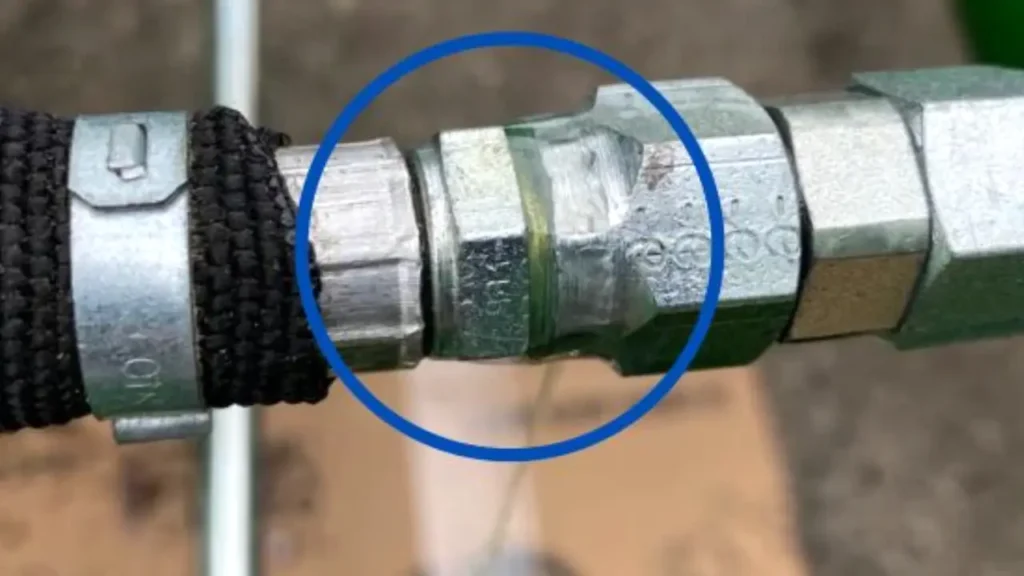
A hydraulic hose leaking at the fitting is a common issue that can lead to fluid loss, system contamination, and potential equipment damage. Here’s a breakdown of possible causes and troubleshooting steps:
1. Identify the Leak Source:
Visual Inspection: Carefully inspect the fitting and surrounding area for signs of leakage:
- Fluid seepage: Look for visible fluid dripping or weeping from the fitting itself, the threads, or the connection to the hose.
- Fluid accumulation: Check for puddles of hydraulic fluid beneath the fitting.
Pressure Test (if applicable): If possible, perform a low-pressure test to pinpoint the exact location of the leak.
2. Common Causes of Leaks:
- Loose Fitting: The most common cause. The fitting may not be tightened sufficiently, allowing fluid to escape.
- Damaged Threads: Overtightening can damage the threads on the fitting or the port, preventing a proper seal.
- Incorrect Fitting: Using the wrong type of fitting (e.g., incorrect thread size, incompatible materials) can lead to improper sealing.
- Damaged O-rings/Seals: If the fitting uses O-rings or other seals, they may be damaged, worn, or missing.
- Hose Damage: The hose itself may be damaged near the fitting, such as cuts, abrasions, or internal wear.
- Contamination: Dirt, debris, or foreign particles can interfere with the seal.
3. Troubleshooting Steps:
Tighten the Fitting (with caution):
- Use a wrench: Tighten the fitting securely, but avoid overtightening, which can damage the threads.
- Torque wrench: For critical applications, use a torque wrench to tighten the fitting to the manufacturer‘s specified torque.
- Inspect and Replace O-rings/Seals:
- If applicable, carefully inspect the O-rings or seals for damage. Replace any damaged or worn seals.
Clean the Fitting and Hose:
- Thoroughly clean the fitting and the hose end with a suitable solvent (e.g., denatured alcohol).
- Remove any dirt, debris, or old sealant.
Replace the Fitting:
If tightening or cleaning doesn’t resolve the leak, the fitting may need to be replaced.
Replace the Hose:
If the leak is due to hose damage or if the fitting cannot be easily replaced, it may be necessary to replace the entire hose assembly.
By carefully inspecting the leak source and following these troubleshooting steps, you can effectively address hydraulic hose leaks at the fitting and ensure the safe and reliable operation of your hydraulic system.
How to Fix a Leaking Hydraulic Hose
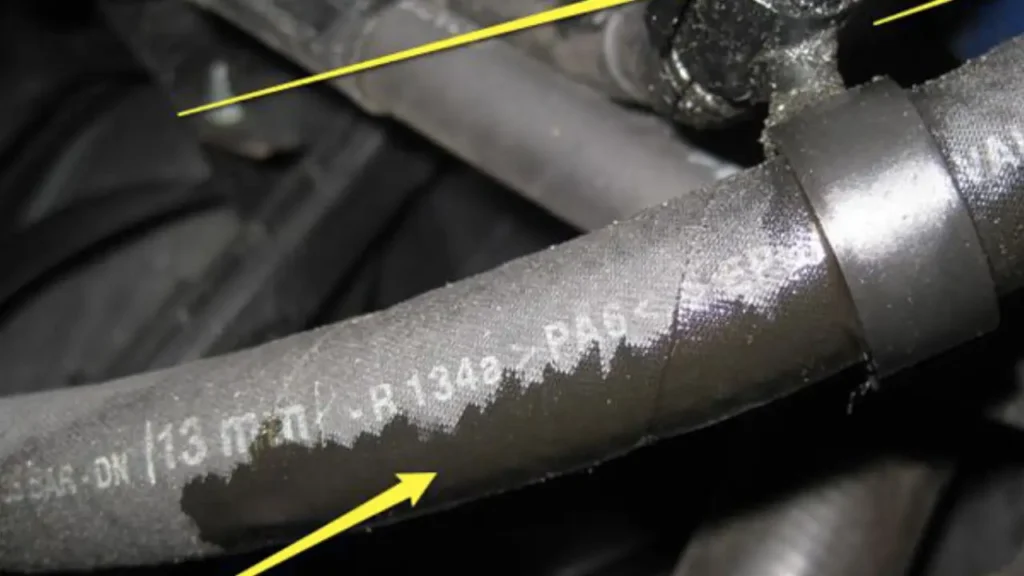
Disclaimer: While minor repairs can be attempted, it’s often safer and more efficient to replace a damaged hydraulic hose completely. If you’re unsure about the repair process, consult a professional hydraulic technician.
Safety First:
- Shut Down and Cool Down: Always turn off the machine and let it cool down completely before attempting any repairs.
- Relieve Pressure: Release the pressure in the hydraulic system using the appropriate method (e.g., operating controls, pressure relief valve).
- Wear Protective Gear: Use gloves, safety glasses, and protective clothing to avoid injury.
Repairing Minor Leaks:
- Locate the Leak: Pinpoint the exact location of the leak.
- Clean the Area: Remove dirt and debris around the leak to ensure a clean surface.
- Apply a Hydraulic Hose Repair Kit: Follow the instructions on the repair kit to apply the sealant or clamp to the damaged area.
- Test for Leaks: After the repair, operate the machine at low pressure to check for any remaining leaks.
Replacing a Damaged Hose:
- Identify the Hose: Note the hose’s size, type, and fittings.
- Cut the Damaged Section: Carefully cut out the damaged portion of the hose, ensuring a clean cut.
- Assemble New Fittings: Attach new fittings to the cut ends of the hose using specialized crimping tools.
- Connect the Hose: Install the repaired hose, ensuring correct alignment and secure connections.
- Bleed the System: If necessary, bleed the hydraulic system to remove air bubbles.
Important Considerations:
- Professional Repair: For complex repairs or high-pressure systems, consider consulting a hydraulic specialist.
- Hose Quality: Use high-quality hoses and fittings to ensure durability and safety.
- Crimping Tools: If crimping is required, use proper tools to ensure a secure and leak-proof connection.
- Hydraulic Fluid Compatibility: Ensure that the replacement hose and fittings are compatible with the hydraulic fluid used in your system.
Remember: Hydraulic systems can be dangerous if not handled properly. If you’re unsure about any step, seek professional assistance.
Hydraulic Hose Leaking Solutions
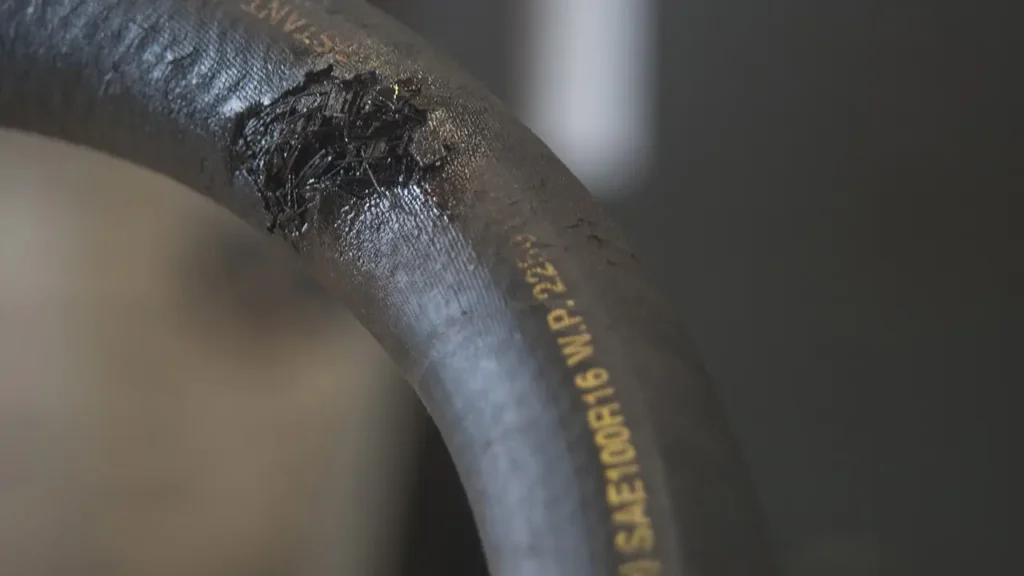
Here are some solutions for hydraulic hose leaking in the following:
Prevention is Key
- Regular Inspections: Conduct routine inspections to identify potential issues early on.
- Quality Hoses: Use high-quality hoses from reputable manufacturers.
- Proper Installation: Ensure correct installation and routing to avoid stress on the hose.
- Avoid Extreme Conditions: Protect hoses from excessive heat, cold, and chemicals.
- Regular Fluid Changes: Keep hydraulic fluid clean and free of contaminants.
Repairing Minor Leaks
For minor leaks, you can consider using a hydraulic hose repair kit. These kits typically include a clamp or sleeve and adhesive to seal the leak. However, it’s important to note that this is a temporary solution and may not be suitable for all types of leaks.
Replacing a Damaged Hose
In most cases, the best solution for a leaking hydraulic hose is to replace it entirely. Here’s a general process:
- Identify the Hose: Determine the hose’s size, type, and fittings.
- Drain the System: Release the hydraulic fluid from the affected circuit.
- Cut the Damaged Section: Carefully cut out the damaged portion of the hose.
- Assemble New Fittings: Attach new fittings to the cut ends of the hose using specialized crimping tools.
- Connect the Hose: Install the new hose, ensuring correct alignment and secure connections.
- Bleed the System: Remove air from the hydraulic system to restore proper function.
Professional Help
If you’re unsure about any of these steps or if the leak is severe, it’s best to consult a hydraulic specialist. They have the expertise and tools to diagnose and repair the issue efficiently.
Remember: Always prioritize safety when working with hydraulic systems. Wear protective gear and follow the manufacturer‘s instructions.
Conclusion
Hydraulic hose leaks can lead to significant downtime, safety hazards, and costly repairs. By understanding the common causes, implementing preventive measures, and taking prompt action to address leaks, you can minimize these risks and ensure the smooth operation of your hydraulic systems.
Remember: Regular inspections, proper maintenance, and the use of high-quality hydraulic hoses are essential for preventing leaks and maximizing the lifespan of your equipment.
Don’t let hydraulic hose leaks disrupt your operations. Invest in high-quality, custom hydraulic hoses tailored to your specific needs.
Contact us today to discuss your hydraulic hose requirements.

